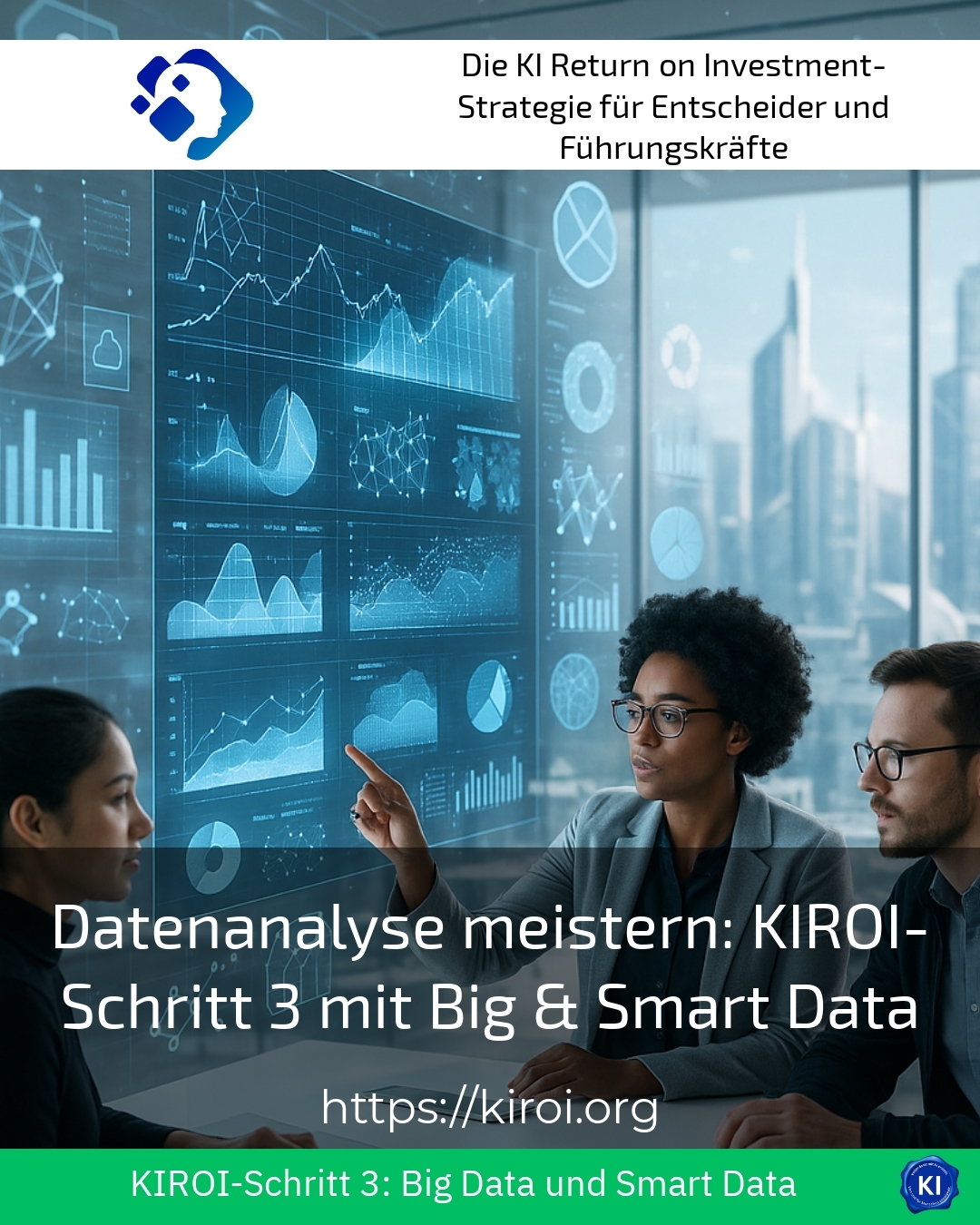The art of mastering data analysis is essential for companies in every industry today. In the third step of the KIROI method in particular, the combination of big data and smart data plays a central role in gaining meaningful insights. It is not just about the sheer volume of data, but above all about the targeted utilisation and intelligent processing to enable well-founded decisions.
Data analysis in practice: From a sea of data to added value
Dealing with enormous amounts of data, so-called big data, poses major challenges for many companies. However, simply collecting large amounts of data is not very effective. Instead, this data must be selectively cleansed and transformed into valuable, usable information - smart data. This creates a data-based basis for decision-making that efficiently supports business processes.
The logistics sector is demonstrating how supply chains can be optimised through targeted data analysis. For example, timetable data, stock levels and transport routes can be fed into a standardised system and analysed. Smart data makes it possible to recognise bottlenecks at an early stage and forecast delivery times more precisely.
Intelligent data analyses improve quality control in production. Machine data collected by sensors is analysed in order to identify production errors at an early stage and minimise system downtimes. In this way, companies support stable processes and increase product quality.
Data analyses also play a central role in marketing. Customer behaviour is evaluated in order to develop personalised offers. The result: more effective campaigns and a targeted approach based on customers' individual preferences.
KIROI step 3: Intelligent use of big & smart data for demonstrable success
In the third step of the KIROI method, the processing of big data is combined with smart techniques. Not only are large volumes of data collected, but they are also systematically analysed using innovative analysis methods such as machine learning and data mining. The insights gained then support the derivation of specific recommendations for action.
An example from the energy industry shows how smart data analyses customer consumption patterns in order to control electricity grids more efficiently. Data analysis makes it possible to predict peak loads and thus better regulate the flow of energy.
In the healthcare sector, early diagnosis is achieved by analysing patient data using intelligent algorithms. Large data sets from examinations or monitoring systems are filtered in a targeted manner and provide doctors with valuable support during treatment.
In the financial sector, companies use data analyses to identify fraudulent activities. Automated systems help to recognise unusual patterns and minimise risks.
BEST PRACTICE with one customer (name hidden due to NDA contract) As part of a data-driven project, we were able to use smart data to optimise the supply chain management of an international retail company. By analysing extensive inventory and movement data, we were able to create transparent insights that allowed us to efficiently adapt warehousing and avoid bottlenecks in distribution.
Core technologies of modern data analysis
Various advanced technologies are used to realise the data analysis potential. Machine learning and artificial intelligence help to recognise patterns and correlations. Statistical analysis methods support the validation of results. Real-time analyses make it possible to react promptly to changes.
Visualisation tools also play an important role. They convert complex data sets into comprehensible graphics, such as dashboards or heat maps. This enables decision-makers to quickly grasp the relevant information and coordinate it precisely.
For example, a medium-sized manufacturing company uses dashboards to clearly monitor quality data from production. This allows deviations to be recognised and rectified immediately without risking expensive downtime.
Network-related smart data analyses are used in the telecommunications industry to increase customer satisfaction. Continuous monitoring enables faults to be identified quickly and customer communication to be improved.
Data analysis to accompany projects: transruption coaching
Many companies report that the complexity of data analysis requires special support. Transruption coaching provides targeted support in the planning, implementation and integration of data-based projects. This provides impetus, builds expertise and generates sustainable benefits.
In the field of smart data, this coaching is valuable because the quality of the raw data, the selection of suitable methods and the interpretation of the results are crucial for success. The support often helps to structure the flood of data and make it usable in a targeted manner.
One example can be seen in the retail sector, where coaching sessions accompany the introduction of advanced data analysis systems so that employees can learn how to use smart data and thus develop well-founded marketing strategies.
Experienced coaches also provide support in mechanical engineering to effectively integrate data analysis projects into existing process landscapes. This achieves sustainable process improvement and anchors expertise in the company.
A third example describes the optimisation of maintenance work in the energy supply sector. Transruption coaching enables teams to introduce data-based early warning systems and thus reduce downtimes.
My analysis
Data analysis is becoming increasingly effective through the combination of big data and smart data. This gives companies valuable insights that they can use to improve processes, customer satisfaction and product quality. KIROI Step 3 shows how the intelligent refinement of data can generate targeted impetus for action. It is important to have qualified support that addresses technical and methodological challenges and anchors the data strategy in the long term. In this way, data analysis supports companies in their digital transformation and competitive success.
Further links from the text above:
What does smart data mean and what are the application scenarios?
Smart + Big Data | Artificial Intelligence
Big and smart data - from statistics to data analysis
Smart data: definition, application and difference to big data
Making decisions with smart data
Data analysis: from big data to smart data
Big and smart data - DLR
For more information and if you have any questions, please contact Contact us or read more blog posts on the topic Artificial intelligence here.















